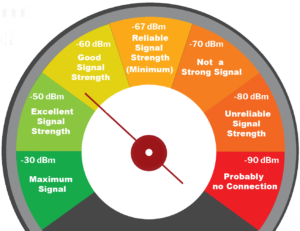Understanding the role of base stations in wireless communication
The basics of base stations and their functions in wireless networks
A base station is a fixed transceiver used in telecommunications that serves as the primary hub for one or more wireless mobile client devices. The base station acts as the primary point of communication between the mobile devices and the wired network, such as the telephone or internet.
There are several different types of base stations, each with its own set of features and technologies. Some common types include:
🔺 Cell site: A cell site is a base station that is used in cellular networks to provide wireless coverage over a specific geographic area, known as a cell.
🔺 Microcell: A microcell is a small-scale base station that is used to provide wireless coverage in a specific area, such as a building or campus.
🔺 Picocell: A picocell is even smaller than a microcell and is used for in-building coverage.

Base stations use different technologies to communicate with mobile devices, including:
🔺 CDMA (Code Division Multiple Access): a digital cellular technology that uses spread-spectrum techniques to allow multiple users to share the same frequency band simultaneously.
🔺 GSM (Global System for Mobile Communications): a digital cellular technology that is widely used in Europe and Asia.
🔺 LTE (Long-Term Evolution): a high-speed wireless communication standard for mobile devices and data terminals, including smartphones and tablets.
A base station typically includes a number of components, including:
🔺 Transceiver: This is the device that sends and receives signals to and from mobile devices.
🔺 Antennas: These devices are used to transmit and receive signals over the air.
🔺 Power supply: This is used to provide power to the base station.
🔺 Cabling: This connects the base station to the wired network and other components.
DBm (decibel-milliwatts) is a unit of measurement used to express the power level of wireless signals, such as those used in cellular networks and Wi-Fi. It is an absolute power measurement and is expressed in terms of milliwatts (mW).
The relationship between dBm and milliwatts is: P(dBm) = 10 log10 (P(mW))

A signal strength of -50 dBm is considered to be very strong, while a signal strength of -90 dBm is considered to be very weak. Generally, a signal strength of -70 dBm or higher is considered to be sufficient for most wireless applications.
In wireless networks, the signal strength can be affected by a variety of factors, such as the distance between the device and the base station, the number of walls or other physical obstructions between the device and the base station, and the presence of other wireless devices operating in the same frequency band.
It’s also important to note that different wireless technologies and standards have different sensitivity levels, meaning that a certain signal strength value will provide different quality of service or connection. For example, in cellular networks, a signal strength of -85 dBm is considered to be the minimum required for a reliable connection, while for WiFi networks, a signal strength of -67 dBm is considered the minimum for optimal performance.

In general, when measuring the signal strength, it’s important to keep in mind that dBm values are logarithmic, meaning that a difference of 10 dBm is equivalent to a 10-fold difference in power. Therefore, a difference of 20 dBm represents a 100-fold difference in power level.
Overall, base stations play a critical role in wireless communication by providing the link between mobile devices and the wired network, enabling communication and connectivity for users on the move.

Thanks for the Insights Mishal, its really informative.